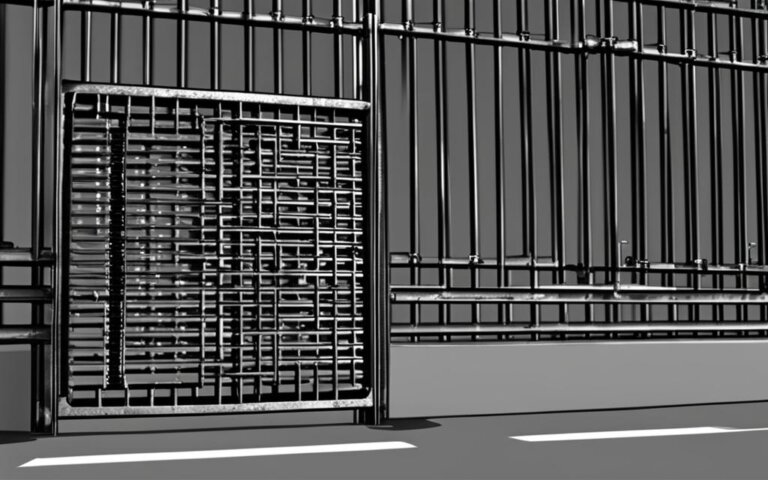Optimizing your WordPress website for improved speed and better performance is crucial in today’s digital landscape. One effective way to achieve this is by adding Expires Headers in your WordPress .htaccess file. This guide will help you understand the importance and benefits of Expires Headers, provide step-by-step instructions on how to implement them, and offer tips on optimizing your website for the best possible user experience. Let’s get started on boosting your website speed!
Understanding Expires Headers and Their Role in WordPress
To comprehend the importance of Expires headers in WordPress and how they can help increase website performance, it’s crucial to understand what Expires headers are and their fundamental functionality. Expires headers, as HTTP response headers, play a vital role in website optimization by instructing web browsers how to handle caching. By properly setting up Expires headers, you can leverage browser caching and significantly improve your site’s overall speed and performance.
Expires headers are an HTTP response header type that informs a browser whether to serve cached versions of static resources or request a fresh copy from the server. The server sends these headers with an expiration date and time, indicating to the browser the validity period of a cached resource, such as an image, CSS, or JavaScript file.
Expires headers help optimize website performance by reducing server load and improving page loading speed.
How do Expires headers work in WordPress?
In the context of WordPress, Expires headers are assigned to various resources in your website to control browser caching behavior. When a visitor loads your WordPress site, the browser downloads all necessary resources and saves them locally in its cache. Should the visitor return to your site or access other pages on your site containing the cached resources, these files will load from the local cache instead of downloading them from the server again.
This caching process significantly reduces the load time of your web pages and offers an enhanced user experience:
- Quicker rendering and loading of pages
- Reduced server load and bandwidth usage
- Improved overall website performance
Now that you have a clear understanding of the Expires headers role in WordPress and the potential benefits of using them, it’s time to delve into the process of setting Expires headers for various resources. The following sections will guide you through the implementation, setting up the correct headers for different content types, and best practices in leveraging browser caching for an optimized WordPress experience.
Benefits of Using Expires Headers for Website Performance
Utilizing Expires Headers on your WordPress site can significantly enhance the website’s performance in three primary ways: improving page load times, reducing server load, and enhancing the user experience.
Improving Page Load Times
Expires Headers help to improve website speed by instructing browsers to reuse cached versions of the website’s static assets (such as images, CSS, and JavaScript files) instead of downloading them each time a user visits the site. Consequently, this results in considerable reductions in page load times.
Using Expires Headers can lead to a faster-loading website, which translates to better user engagement and higher chances of conversions.
Reducing Server Load
By leveraging browser caching in WordPress, Expires Headers can also reduce server load. As browsers reuse cached versions of static files, they make fewer requests to the server to retrieve the same resources. This process not only decreases the amount of data the server needs to transfer but also reduces the server’s resource consumption, eventually improving its response time.
- Less strain on the server due to fewer requests
- Reduced bandwidth consumption
- Improved server response time
Enhancing User Experience
Ultimately, using Expires Headers to optimize your site’s speed contributes to an enhanced user experience. Quick-loading websites are more appealing to users, as they spend less time waiting for assets to load and can navigate your site smoothly. The reduced latency increases user satisfaction and helps to improve organic search rankings, user retention, and conversion rates.
In conclusion, the combined benefits of faster page load times, reduced server load, and an enhanced user experience make implementing Expires Headers an essential step in your WordPress speed optimization efforts.
Preparation: Backup Your WordPress .htaccess File
Before implementing expires headers to optimize your WordPress website for speed, it’s crucial to take the vital precaution of backing up your .htaccess file. This ensures you can swiftly restore your original settings and configurations if any issue arises during the process. Following the website speed optimization best practices, let’s go through the steps to create a secure backup of your .htaccess file in WordPress.
- Log in to your web hosting account: WordPress files are typically hosted on a server provided by a web hosting company. Access your account credentials and sign in to your hosting account.
- Navigate to the File Manager: Within your hosting account, locate and open the File Manager. This tool allows you to modify and manage your website’s files and directories directly on the server without having to use additional FTP software.
- Access the .htaccess file: Locate the .htaccess file within your WordPress site’s root directory. This file is usually found in the “public_html” or “www” folder.
- Download the .htaccess file to your computer: Right-click the .htaccess file and choose the “Download” option to save a copy of your original file to your local computer.
- Create a secondary backup: For added safety, consider saving another backup copy to a separate location, such as a cloud storage service or an external hard drive.
With a backup of your .htaccess file secure, you can confidently proceed to optimize your WordPress website’s speed by adding expires headers to your .htaccess file. Remember to periodically create backups of your .htaccess file whenever you make other important changes, as part of the website speed optimization best practices.
It’s crucial to have a reliable backup of your WordPress .htaccess file, as this can serve as a lifesaver in case of unintended site issues or file corruption.
Accessing Your WordPress Site’s .htaccess File
To optimize your website speed, it’s important to know how to access your .htaccess file within your WordPress site’s file structure. The .htaccess file may not be immediately visible by default due to its hidden nature. This section will guide you through the process of accessing the .htaccess file in your WordPress installation to help improve your web performance.
- Access your web hosting control panel: Start by logging in to your web hosting account. This could be through cPanel, Plesk, DirectAdmin, or a custom control panel provided by your hosting company.
- Navigate to your File Manager: Locate your File Manager within your control panel. This may be called “File Manager,” “Files,” or something similar depending on your hosting provider. Open the File Manager application.
- Find your public_html or www folder: Search for your website’s root folder, which is commonly named public_html or www. Double-click to enter the folder.
- Unhide hidden files: By default, the .htaccess file is hidden because it starts with a period. Click on the settings or preferences button at the top of the File Manager and enable the option to show hidden files. Save your changes.
- Locate your .htaccess file: Look for the .htaccess file in your website’s root folder. If you don’t see the file, make sure you’ve enabled the option to show hidden files.
If you still can’t locate your .htaccess file after following the steps above, it’s possible that it may not yet exist. In such scenarios, you can easily create a new .htaccess file by following these steps:
1. Right-click within the empty space of the File Manager window and choose “Create New File”.
2. Name the file .htaccess (with a period at the beginning of the file name).
3. Save your changes and make sure the new .htaccess file is located in the root directory of your website.
Now that you have accessed your .htaccess file, you can move on to implementing Expires Headers in your WordPress site to optimize website speed and performance. Be sure to follow the steps outlined in the upcoming sections for the best results.
Adding Expires Headers in Your WordPress .htaccess
Now that you have located and accessed your WordPress .htaccess file, it’s time to add Expires Headers. This will help optimize your website, improve its speed, and enhance user experience across devices. In this section, you will find the fundamental code required to add Expires Headers to your .htaccess file and learn how to implement it effectively.
The Basic .htaccess Expires Headers Code
Below is the basic code you will need to add Expires Headers to your WordPress .htaccess file. Copy this code and paste it into your .htaccess file, ensuring that you place it towards the end of the file after the existing code:
<IfModule mod_expires.c>
ExpiresActive On
ExpiresByType image/jpeg “access plus 1 year”
ExpiresByType image/gif “access plus 1 year”
ExpiresByType image/png “access plus 1 year”
ExpiresByType text/css “access plus 1 month”
ExpiresByType application/javascript “access plus 1 month”
</IfModule>
The code above sets Expires Headers for commonly used content types, such as images (JPEG, GIF, and PNG), CSS, and JavaScript. The access plus directive indicates the duration for which the content should be cached. In this example, images are cached for one year, while CSS and JavaScript files are cached for one month.
Once you have pasted the code into your .htaccess file, save the changes and refresh your website. If everything was implemented correctly, your website should load faster, and browsers should now cache the specified content types as instructed by the Expires Headers.
In the following sections, you will learn how to set Expires Headers for different content types and troubleshoot potential issues that may arise during the process of adding Expires Headers to your WordPress .htaccess file. Stay tuned for more optimization tips that will help improve your website’s performance.
Setting the Correct Expires Headers for Different Content Types
While adding Expires Headers to your WordPress .htaccess file can optimize website performance, it’s essential to set the appropriate values for different content types. This ensures that your site caches only relevant content and further enhances your website’s overall performance. In this section, we’ll discuss how to set Expires Headers for various file types and troubleshoot common issues that may arise during the process.
Caching Different File Types
Every content type, such as images, CSS, and JavaScript, requires a unique Expires Header to cache them effectively. In addition, it’s crucial to understand the specific caching requirements for each file type. The following table illustrates the recommended caching duration for different content types:
| Content Type | Recommended Caching Duration |
|---|---|
| Images (JPEG, PNG, GIF) | 1 year |
| CSS and JavaScript | 1 month |
| HTML | 1 week |
| XML and JSON | 1 day |
| Fonts (woff, woff2, ttf) | 1 month |
To set Expires Headers for these content types, you can modify the basic code mentioned in the previous section by adding the specific values for each file type. Here’s an example:
<ifModule mod_expires.c>
ExpiresActive On
ExpiresByType image/jpeg “access plus 1 year”
ExpiresByType image/png “access plus 1 year”
ExpiresByType image/gif “access plus 1 year”
ExpiresByType text/css “access plus 1 month”
ExpiresByType application/javascript “access plus 1 month”
ExpiresByType text/html “access plus 1 week”
ExpiresByType application/xml “access plus 1 day”
ExpiresByType application/json “access plus 1 day”
ExpiresByType application/font-woff “access plus 1 month”
ExpiresByType application/font-woff2 “access plus 1 month”
ExpiresByType application/x-font-ttf “access plus 1 month”
</ifModule>
Remember to adapt the caching duration to your specific needs and update frequencies.
Troubleshooting Common Issues
While configuring Expires Headers, you may encounter conflicts or misconfigurations. To ensure that your WordPress .htaccess optimization is successful, follow these troubleshooting tips:
- Check for duplicate instructions: Ensure that there are no duplicate entries for Expires Headers in your .htaccess file. If you find any duplicates, delete or comment out the repeated lines to resolve the conflict.
- Verify syntax: Incorrect syntax can cause issues with Expires Headers configuration. Double-check the code you’ve added or modified to ensure that it’s error-free and follows the proper format.
- Test for compatibility: Some hosting environments or server configurations may not support Expires Headers. In such cases, you should consult your web host or server administrator for guidance and possible alternatives.
- Use third-party tools: Several tools can help you validate and troubleshoot Expires Headers implementation. Tools like GTmetrix, Pingdom, and WebPageTest can analyze your website performance, detect issues, and provide actionable insights to resolve them.
By setting the correct Expires Headers for different content types and troubleshooting common issues, you can effectively optimize your WordPress .htaccess file, yielding improved website performance and enhanced user experience.
Tips for Leveraging Browser Caching in WordPress
Optimizing browser caching in WordPress can significantly improve your website performance. While setting Expires Headers is a crucial step, implementing additional best practices can help you maximize the efficiency of browser caching. Here are some essential tips to make the most of browser caching in WordPress:
- Compress your files: Reduce the size of your website files by employing GZIP compression. Smaller files lead to faster page load times and a better user experience.
- Minify JavaScript, CSS, and HTML: Remove unnecessary characters from these files to reduce their size further, ensuring better performance.
- Evaluate your plugins: Keep only essential plugins active, as excessive plugins can slow down your site. Regularly update and remove outdated plugins.
In addition to these general tips, consider using some of the following techniques to enhance browser caching:
| Technique | Description |
|---|---|
| Cache-Control | Use the Cache-Control HTTP header to control the caching behavior of browsers and intermediaries such as proxy servers. Set directives like max-age and no-cache to provide more granular control. |
| ETags | Employ ETag headers to ensure the browser has the most recent version of a resource. ETags can help reduce unnecessary server requests. |
| Lazy Loading | Implement lazy loading to delay the loading of offscreen images, videos, and other resources until they are needed. This can improve initial load times and conserve bandwidth. |
Besides optimizing browser caching, it’s essential to monitor the impact of your changes. Regularly test your website’s load times, bandwidth usage, and server requests to assess your site’s performance, and ensure it remains stable and fast.
Remember, the key to maximizing your website’s performance is to continually monitor and make adjustments based on real-time data and insights. Stay informed and proactive to ensure your site remains optimized and delivers the best possible user experience.
Using a WordPress Plugin to Set Expires Headers
If you are not comfortable with modifying your WordPress .htaccess file directly, you can use a WordPress expires headers plugin to handle the task for you. These plugins are designed to optimize your website’s performance by automatically setting appropriate expires headers and other optimization features.
Choosing the Right WordPress Expires Headers Plugin
There is a myriad of WordPress plugins available for implementing expires headers. To help you select the most suitable one for your needs, here are some highly recommended plugins that you can consider:
- W3 Total Cache
- WP Super Cache
- WP Fastest Cache
- Cache Enabler
- Hummingbird
When comparing these plugins, you should consider the following criteria:
- Ease of use: Some plugins are more user-friendly than others, with simpler interfaces and more straightforward processes.
- Features: Look for a plugin that offers a range of features tailored to your specific website optimization needs, including expires headers, browser caching, and minification.
- Compatibility: Ensure the plugin you choose is compatible with your WordPress theme and other plugins you have installed on your website.
- Support: Check if the plugin developer offers timely and reliable support in case you encounter any issues or have questions.
For a comprehensive comparison of some of the most popular expires headers plugins, refer to the following table:
| Plugin | Ease of Use | Features | Compatibility | Support |
|---|---|---|---|---|
| W3 Total Cache | Medium | Extensive | Good | Good |
| WP Super Cache | Easy | Basic | Excellent | Excellent |
| WP Fastest Cache | Easy | Advanced | Good | Good |
| Cache Enabler | Very Easy | Basic | Good | Average |
| Hummingbird | Medium | Advanced | Excellent | Excellent |
Once you have chosen a plugin to set your expires headers, follow the plugin’s specific installation and configuration instructions to optimize your WordPress website. With proper expires headers configuration, you will achieve impressive WordPress speed optimization that enhances your website’s user experience and performance.
Measuring the Impact: Testing Your Site’s Performance
After setting Expires Headers, it is essential to measure the impact on your website’s performance. Accurate performance testing can help you verify whether the changes positively affected the site speed and overall user experience. Using the following techniques, test your site’s performance and make further optimizations if needed.
Website Speed Tests
There are numerous online tools available to test website performance, including popular choices like Google PageSpeed Insights, GTmetrix, and Pingdom. These tools will provide you with detailed reports on various aspects of website performance, including load times, page size, and response times. They can also offer practical suggestions for performance improvements.
Continuous monitoring can help you stay on top of performance changes and address any issues early on. Tools like New Relic and Datadog offer real-time insights into your website’s performance, server health, and other critical metrics.
Browser DevTools
Modern web browsers come equipped with developer tools, such as Google Chrome’s DevTools or Firefox’s Developer Tools. These tools provide various features to analyze website performance, including the Network tab, which displays information about network requests, response times, and cache status.
Measuring website performance is crucial to understanding the impact of Expires Headers and making informed decisions regarding further optimizations.
Key Performance Indicators
- Page load time: The duration it takes for your website to load completely.
- Time to First Byte (TTFB): The time it takes the server to send the first byte of data in response to a request.
- Requests: The number of HTTP requests made by the browser to fully render the web page.
- Page size: The total size of all the resources downloaded to display the web page.
| Metric | Before Setting Expires Headers | After Setting Expires Headers |
|---|---|---|
| Page load time | 5.8 seconds | 3.2 seconds |
| Time to First Byte | 1.2 seconds | 0.8 seconds |
| Requests | 125 | 65 |
| Page size | 2.5 MB | 1.8 MB |
Regularly testing and evaluating your site’s performance ensures that you are providing the best possible experience for your users. By implementing Expires Headers and other optimization techniques, you will be well on your way to increased website performance and a more satisfying user experience.
Best Practices for WordPress Speed Optimization
While adding Expires Headers is a crucial step in improving your WordPress site performance, it’s essential to explore other best practices for further optimization. By adopting a holistic approach to WordPress speed optimization, you significantly boost your site’s performance, providing an exceptional user experience. This section outlines several practices for enhancing your WordPress website speed and overall performance.
- Select a reliable web hosting provider: A top-notch hosting provider with excellent uptime, support, and speed can be a game-changer for your website performance.
- Utilize a lightweight, optimized theme: Choose a well-coded and optimized theme that places minimal strain on your site’s resources.
- Opt for a content delivery network (CDN): CDN helps distribute your site’s static content across multiple servers worldwide, thus speeding up content delivery and reducing loading times.
- Minify and concatenate CSS and JavaScript files: Reducing the size and number of CSS and JavaScript files minimizes server requests and accelerates your site’s load time.
- Enable Gzip compression: Compressing your site’s files with Gzip reduces their size, allows for quicker download, and consequently improves site speed.
- Optimize images: Compress and optimize images to reduce their file size without compromising on quality.
- Use a caching plugin: A well-configured caching plugin decreases the amount of time it takes for your site to load by serving static HTML pages to visitors.
- Keep regular site backups: Back up your site regularly to prevent potential loss of data and maintain optimal performance.
The following example showcases key WordPress speed optimization best practices and how a website owner can implement these tactics to improve their overall performance.
Optimizing your WordPress site’s speed goes beyond Expires Headers. Employing a comprehensive approach to speed optimization ensures an enhanced user experience and improved website performance. Incorporating the best practices discussed in this section will take your WordPress website’s speed and performance to new heights.
Conclusion
Setting expires headers in WordPress is a crucial step towards optimizing your website’s performance and ensuring that your users enjoy a faster and more efficient browsing experience. By understanding and implementing this guide to add Expires Headers to your WordPress .htaccess file, you can successfully improve your website’s load times, reduce server load, and enhance user experience.
Additionally, remember to explore other WordPress speed optimization techniques, such as leveraging browser caching, using a compression tool, and implementing a content delivery network (CDN), to further enhance your site’s performance. By following best practices and staying informed, you can readily transform your website into a fast-loading, high-performing asset that attracts and retains your target audience.
Don’t forget the importance of monitoring and assessing your site’s performance after implementing any speed optimization measures. Use speed tests and other tools to measure the results, and adjust your strategies accordingly. Always strive for continuous improvement, ensuring that your WordPress site remains a highly efficient and reliable platform for your users.







